Use Old Plano Boxes For Bulk Fly Storage

Of all the thousands of dollars of bass fishing gear that I’ve accumulated over the years there’s very little of it that I can find a use for in my fly fishing today.
Well, I could probably find a way to use some of it, but I’d definitely get bashed for it by my friends. My Plano tackle boxes, however, have proven to be very useful for me in my drift boat and when I’m traveling across the states on my fly fishing trips. I can load up one Plano box for my drift boat and I’m good for the day, and if I’m traveling out west, I often use one to throw all my big dry fly patterns or streamers in, so I don’t have to keep up with several smaller fly boxes during the trip. Every morning I’ll take out what I need and stow them in one or two fly boxes that I can carry easily with me on the water.
Read More »Weather Dictates When and How I Fish My Terrestrials
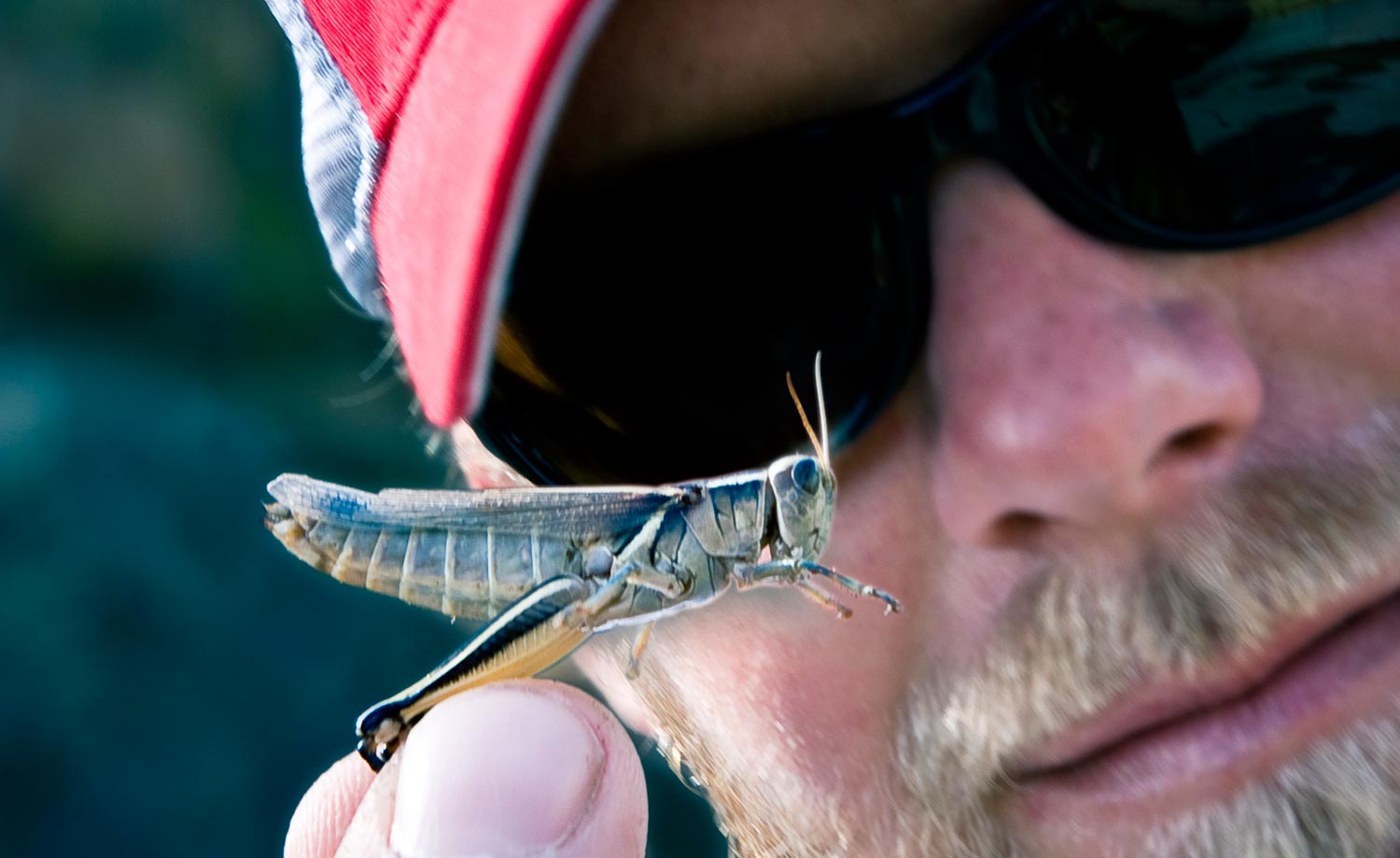
Every year, I’m asked by clients, when is the best time for them to come up and experience the terrestrial bite? For years, I kept a terrestrial fishing journal to help me better serve my clients. The journal documented the arrival times of specific terrestrials and when I first started catching fish on them. It seemed to help me for a couple seasons, but after that, I started to become too reliant on the data in the journal, and I lost sight of the most important variable of all in timing the terrestrial season–weather. Depending on what the weather is doing for the current year, it can speed up or postpone the arrival of the terrestrial season. Some years it will only sway the start of the terrestrial season a week in either direction, while other years, it can sway the arrival well over a month. Understanding the role weather plays in the lives of terrestrials can help anglers nail down more accurately when the terrestrial season will begin and peak in their area. If you can be one of the lucky few to time and start fishing terrestrials before everyone else does, you can be rewarded with some of the biggest fish of the year.
Read More »A Closer Look / The Large Mouth Bass
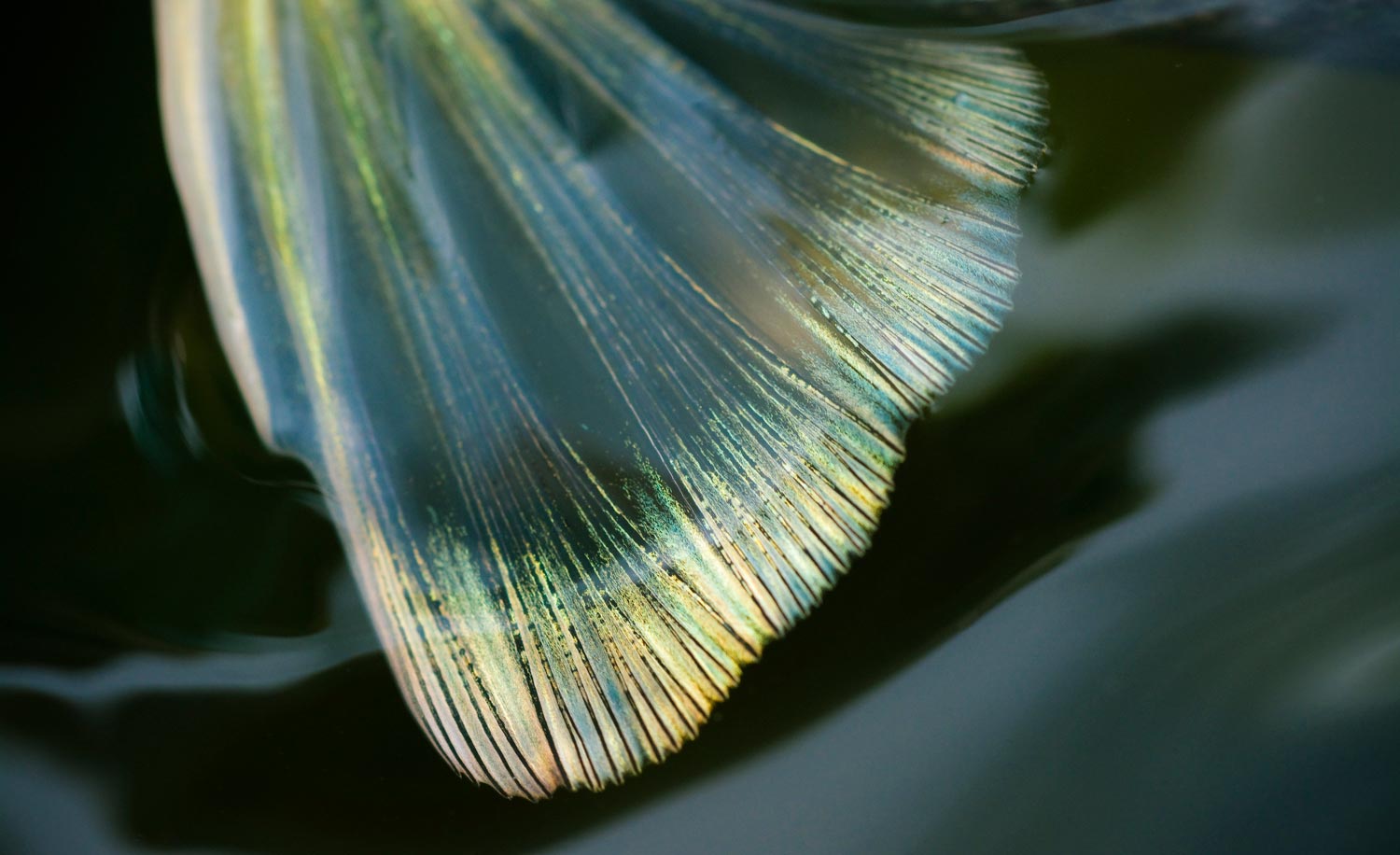
I’M GUILTY.
I have called them ugly fish. I have shown a lack of interest in bass largely due to their color palette. Then, just the other day I noticed the fin on this large mouth.
I’m a big enough man to admit when I’m wrong.
Read More »Little Things Matter: Tippet Spools
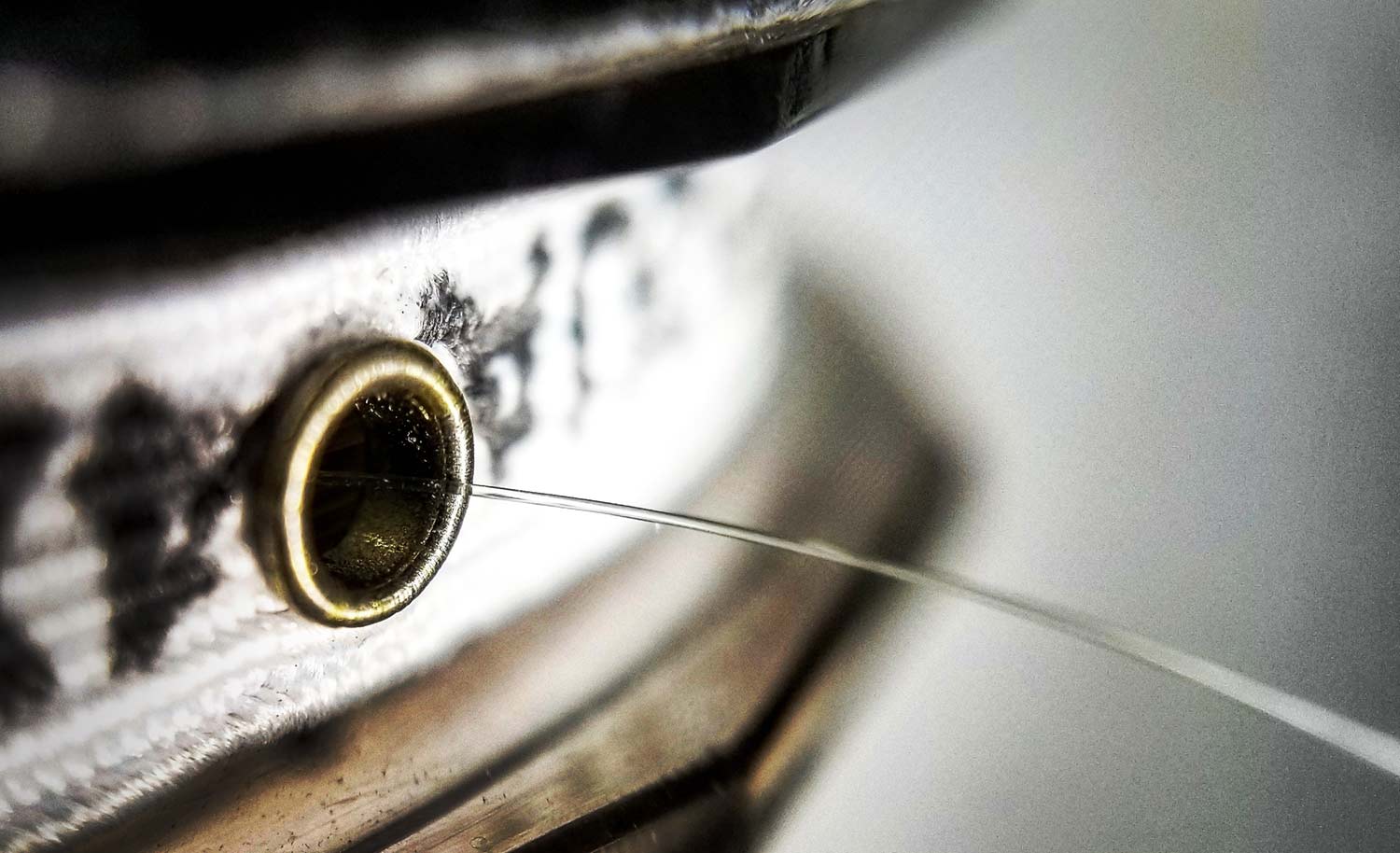
By Bob Reece
I’m a huge believer in the fact that little things matter.
I believe this holds true in all aspects of life, including the world of fly fishing. In the tackle setups that we as fly fishers use, our tippet is often one of those petite items of importance.
Spools of tippet in various sizes are an essential part of a successful day on the water. Their material allows fly fishers to create the connections needed for effective presentations and bringing fish to our nets. While this is widely understood, we often overlook the small aspects of maintaining and using these supportive spools.
Many tippet spools have built in cutters that are imbedded in their plastic rims. During the bustle of a day on the water, the free end of tippet often works its way free from the metal eyelet and elastic band that hold it in place. If the tippet ends up on the same side of the band as the cutter, it is often nicked when peeled off the spool. These unintended abrasions weaken the tippet material and create the possibility of breaking off larger fish. To avoid this occurrence, check your spools throughout the day and leave a slightly longer than normal tag end when cutting off lengths of new tippet.
The same elastic bands that hold the tippet in place, can also blind us to the amount of material that we have left. I spend a significant amount of time fly fishing waters off the beaten path. It’s more than frustrating to reach for your first round of tippet and realize that there are a few inches left of the size that you needed most. I’ve made a habit of
Read More »The Case For Stoneflies
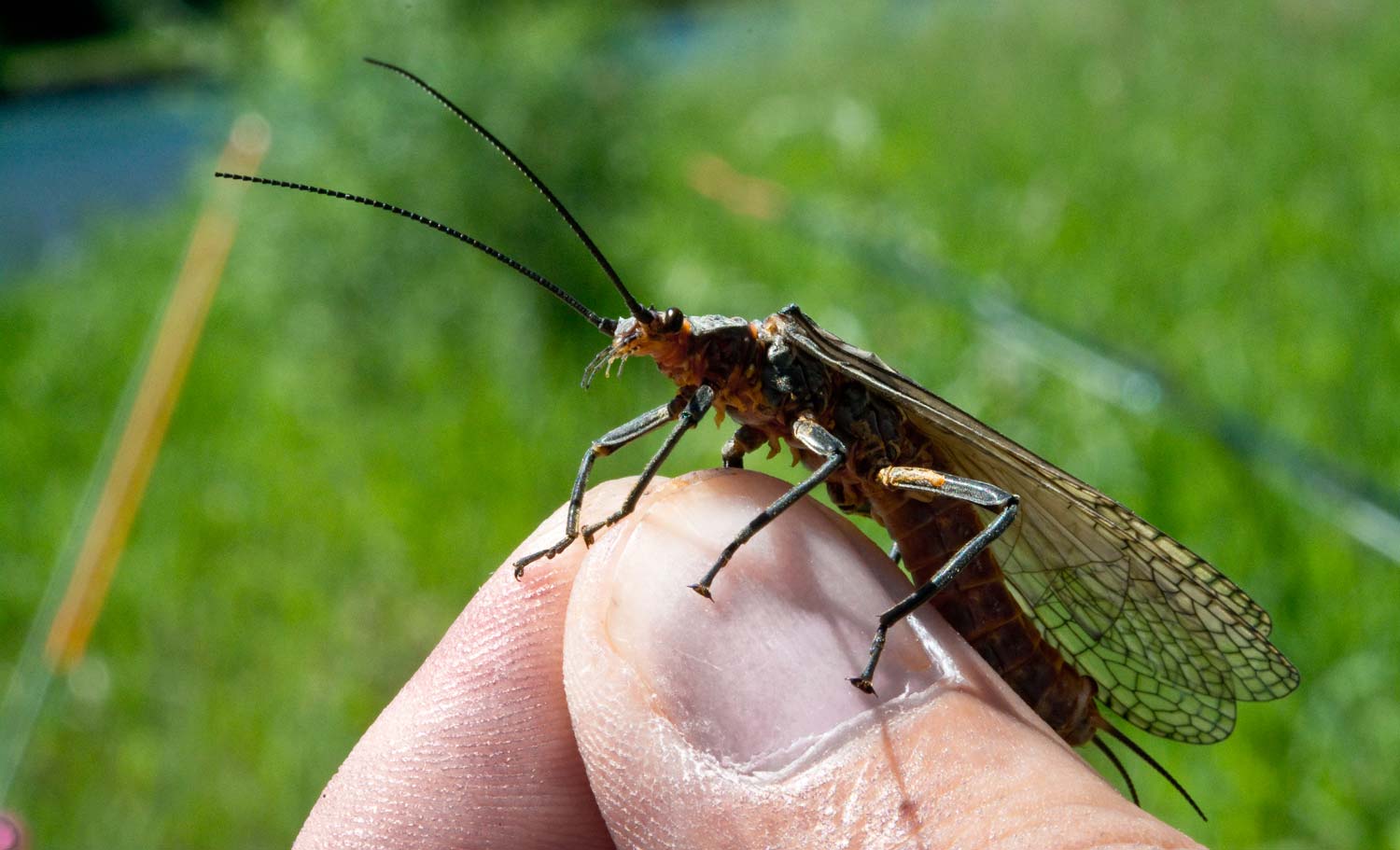
By Louis Cahill
I watched a video the other day about the most important insects for trout fishing.
The host listed the aquatic insects, we are all familiar with as anglers, in order of importance. I was a little shocked to hear my favorite bug come in last on the list, with very little discussion of his life cycle or how to imitate him.
I DECIDED TO TAKE A FEW MINUTES TO EXPLAIN WHY THE STONEFLY IS MY FAVORITE PATTERN FOR TROUT.
If you are a dry fly purist, I can understand why you might not recognize the importance of the stonefly. The supersize varieties that come to mind are a brief, seasonal hatch and can be hard to predict for casual anglers. You might carry a few flies, in case you’re lucky enough see the huge bugs on the water, or you might drift one along the bank if nothing else is happening. If, however, you’re the kind of angler who likes fishing nymphs or, like me, you live somewhere nymph fishing is the starting point, not plan B, stoneflies are the bomb.
There are many different varieties of stonefly and they come in all sizes. For trout feeding below the surface, which is most trout most of the time, they are an important food source, especially in the cooler months, and the patterns that imitate them offer some tactical advantages to anglers. Understanding these advantages means first knowing a little more about the life of a stonefly.
Stoneflies are one of the oldest forms of life on the planet, predating the dinosaurs. They are a successful species but they still have some rough edges evolution hasn’t polished off. These evolutionary shortcomings are what makes them so interesting to fish and anglers.
Stoneflies are slow to mature. Most varieties have a nymphal cycle lasting two to three years. Over that time they slowly grow from tiny nymphs to big, juicy monsters. That means two important things to anglers. In streams where they are found, stonefly nymphs are present all year round and examples of any species exist at many different sizes. That means a stonefly nymph is a good choice in any season and the selection of an appropriate size fly is pretty forgiving.
• Stoneflies are poor swimmers. The nymphs have hooks on they’re feet to hold on to rocky bottoms in fast water. Once they become dislodged, which happens often, they tumble pretty helplessly in the current. This makes them an easy meal for trout and easy to imitate for anglers.
Many stoneflies are big. That makes them an attractive food source for big trout. This is purely anecdotal, but most of the big trout I’ve caught in my life have eaten streamers or stoneflies. The size of the imitations also lends itself to building in weight, making the flies serve double duty as both weight and bait. This makes them especially useful in tandem with smaller nymphs. There is a school of thought that says lighter patterns move more naturally in the water. While I don’t disagree with that entirely, I think the practicality of getting the fly to the bottom is more important.
Stone flies come in a wide variety of
Western Fly Guide for Eastern Anglers
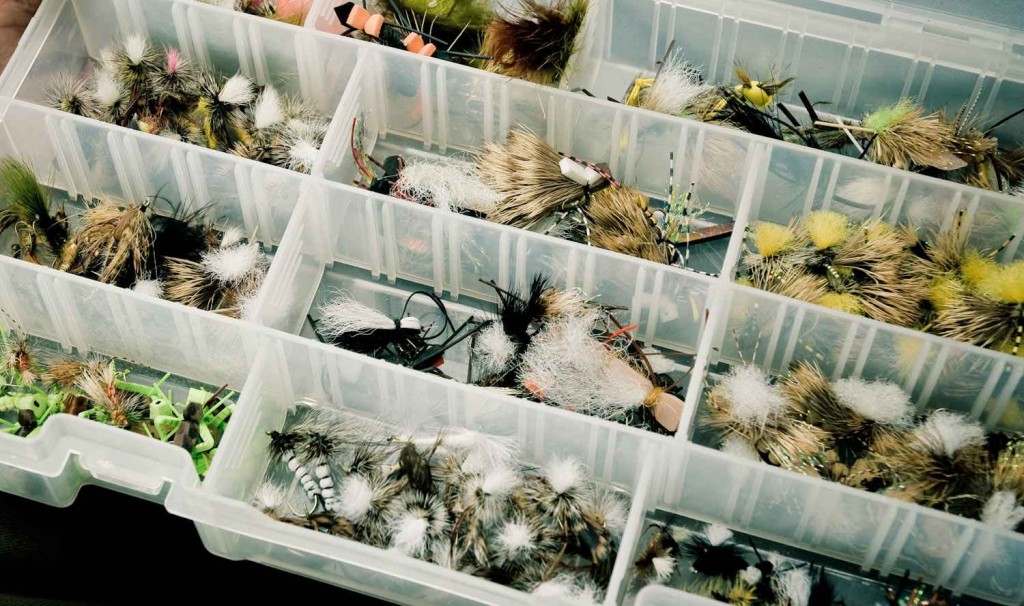
I get asked all the time by eastern fly anglers heading out west for the first time, what fly patterns they should stock up on before they leave.
What percentage of dry flies to wet flies they should pack, what sizes, and should they pack streamers? The questions go on and on. I get most of the email inquiries from eastern anglers that are fixing to make their summer trip out west during the peak of the terrestrial season. For those that know me, you know that I’m the type of fly fisherman that carries gear for every situation on the water at all times, for the simply fact that I can’t stand being under prepared on the water. Here’s the truth though, if I’m making a trip out west during the terrestrial season, I usually lighten my load significantly and I only carrying the fly patterns that I think I’ll be fishing the most. If I’m going to be making a trip WY, MT, ID or CO I’m going to pack less nymphs, more dry flies and streamers. Colorado is a little more tricky, in which nymphs can play a larger roll than the other western states I mentioned, but if you travel their during the peak terrestrial season, my packing suggestions should work just fine.
Why do I lighten my load this time of year, you ask? Because the trout generally are easy to convince to rise to the surface and take a dry fly this time of year, and when they don’t want to rise to the surface, they almost always will devour a streamer. It’s not rocket science, the fish are optimistically looking up since a large portion of their food is found floating on or close to the surface during the summer months.
Let’s say I’m traveling to Jackson, WY in August, which is probably the most popular requested area out west that I receive questions about. Below are the fly patterns I will stock up on.
Dry Fly Box (Go Big, Many of these patterns suck up real estate)
Comments: I always pack a extra plano tackle box to hold all my extra flies. Each evening I will replenish the flies out of this box so I’m stocked up for the next day’s fishing. If I’m not witnessing a hatch or fish taking smaller insects on the water, I generally start
Wade to Win
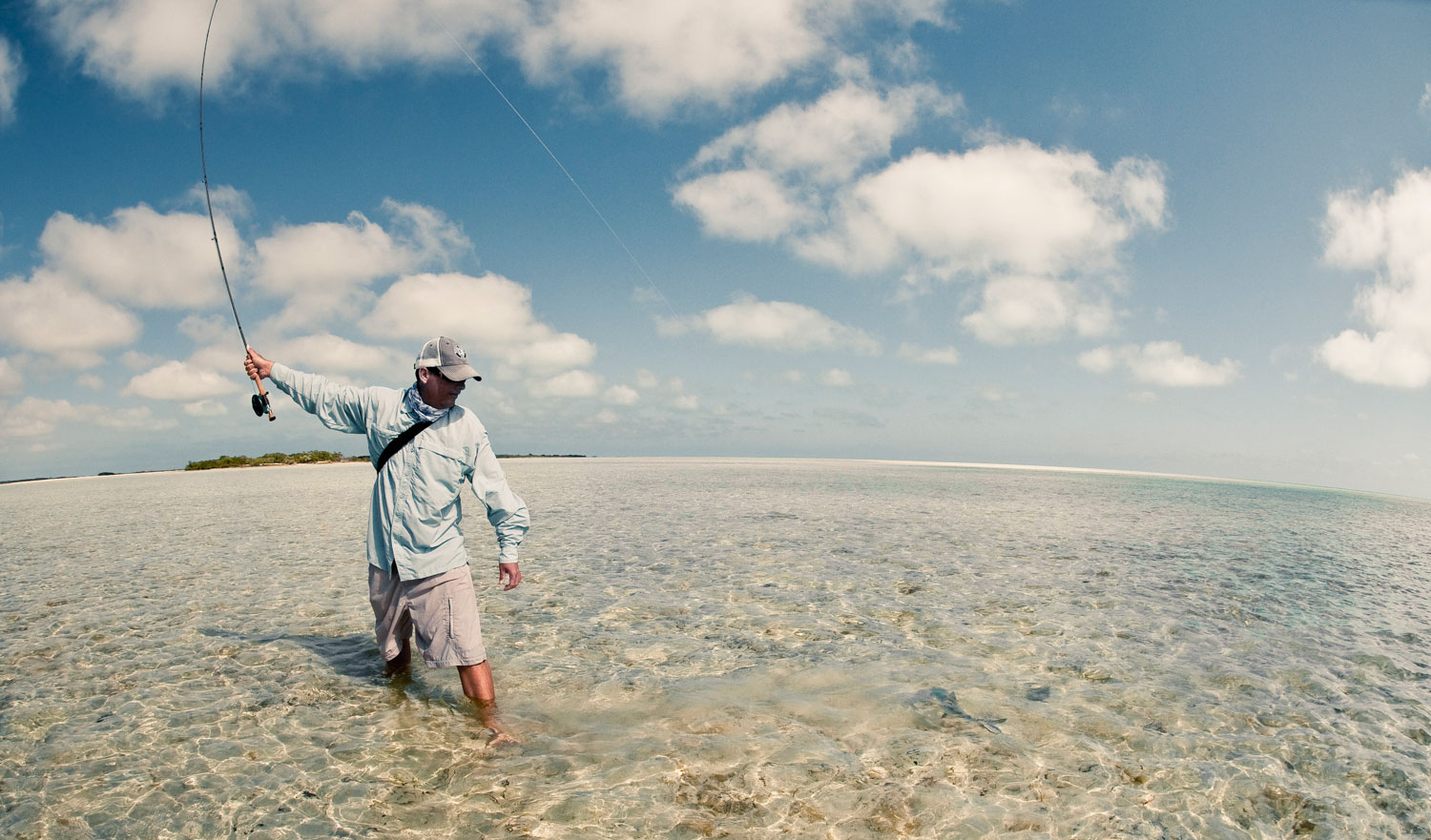
WADE TO WIN, BY BRUCE CHARD
Wading is an exciting way to experience saltwater flats fishing for species like bonefish and permit. It offers the angler a more personal, mano y mano, experience with his quarry. There are a few skills you’ll need to master for a quality wading experience. These tips should make walking the flats a breeze.
The Wading Ready Position
While wading the saltwater flats, it’s important to find a good, comfortable ready position. This position will help you be relaxed as you stroll quietly through the shallows. You’ll be ready to make a saltwater quick cast with ease.
Here are some pointers that make up a good wading ready position.
•Have the fly line, coming from the first stripping guide, pinched to the cork with your index finger. This helps to load the rod quickly on your first false cast.
•Hold the fly at the bend of the hook or cradled comfortably in your cupped hand.
•Do not let the fly touch anything, from the start of the cast until you present it to the fish. Some anglers like to drop the fly in the water and then cast. This motion causes all kinds of issues. They usually hook themselves and miss the shot.
•You can tuck the cork handle of the rod under you arm pit with the rod tip sticking out behind you . This is a nice way to relax a little and stretch your hands
Line Management While Wading
Here are a couple of fly line management tips that will help you when wading.
Fishing Fast
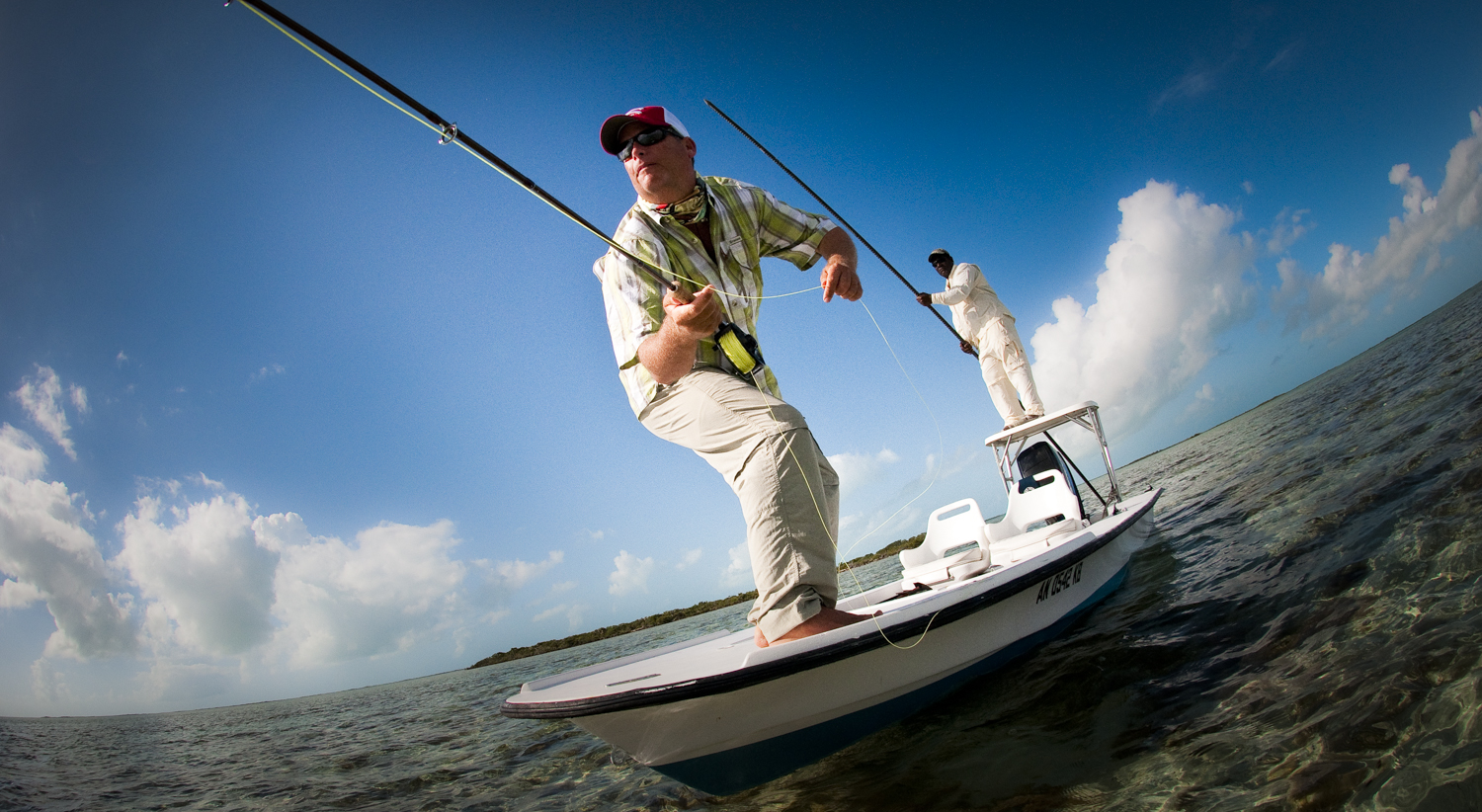
By Owen Plair
There are a lot of situations where fishing fast is the difference in getting an eat or the fish not seeing your fly.
Either because the fish is very close to the boat, or moving at an angle where you only get one cast. When it comes to sight fishing, we’ve all had that surprise fish. That one fish that seems to come out of the magical hat in a split second, 30ft of the skiff. There isn’t much time to present a fly to those close distance, or magic hat fish, but here are a few things that will have you prepared for fishing fast, and putting more magic hat fish on the fly.
HOW DO YOU FISH FAST OR EXACTLY HOW DO YOU DEFINE FISHING FAST?
The first, and most important, rule is being ready and aware on the bow. Keep 6-9 ft of fly line out of the tip of your rod while holding your leader or fly in your line hand. This is called the ready position and it’s key to getting a good first cast off. Keeping 6-9 ft of fly line out of the tip of your rod will help your rod load faster on the first casting stroke and allowing you to get that short distance between 20-30ft of fly line out very fast. Sometimes that 6-9ft of fly line along with a 9-12ft leader is all you need for an up close, in your face shot at a fish. Holding your fly or leader keeps the fly ready to fish, instead of dangling in the water getting the chance to hook up on the bottom or on a piece of grass when you go to cast.
Line management is a big part of being ready to fish fast. Make sure you always have enough fly line stripped out from the reel, usually safe with 30-60ft, maybe more or less depending on the fishing scenario. Most shots are between 30-60ft in your average sight fishing situation, so no need to strip out your entire fly line off the reel. That will just cause more heartache with tangles, especially on a windy day.
You want to have your line in a safe area, where there nothing to snag. Whether it’s on the bow, in a stripping bucket, or on the floor of the skiff. Your fishing partner can help with line management while fishing and also going bare foot on the bow will keep you from standing on line. In the colder months wear thick socks!
Understanding how to read the water, and spot fish will help you greatly. The thing I find works best is
Read More »Tom Rosenbauer’s 8 Tips to Becoming a Better Fly Fisher

THERE ARE FEW GUYS OUT THERE SQUEEZING CORK WITH THE ANGLING CHOPS OF TOM ROSENBAUER.
Tom is the author of nearly two dozen books on fly fishing and too many articles to count. Add to that his podcast and posts on Orvis News and it’s fair to call him one of the leading educators in the field. Tom’s been an angler his whole life and was tying flies commercially when he was just fourteen. He has fished all over the world, including the English chalk streams, Christmas Island, and Kamchatka. He invented stuff you use every time you fly fish, like the magnetic net keeper and tungsten beads for fly tying.
Tom is now the Marketing Director for Orvis and a driving force in the rejuvenation of that great brand. A few people know that he also makes his own chocolate from the beans, which is incredibly technical not to mention amazingly delicious. He’s a hell of a nice guy and a good friend.
Tom has a lot to share on the subject of fly fishing so we asked him for some broad strokes. Some basic tips that will help you be a better and more satisfied angler. Here’s what he got back to us with.
Tom Rosenbauer’s 8 Tips To Becoming a Better Fly Fisher:
1. Observe everything. Look around every time you catch a fish and figure out why it was there and why it ate at that particular time. Look at the sun angle, the surrounding terrain, current threads in rivers, or highways on the flats.
Read More »Get on the water, without breaking the bank A Guide To Alternative Watercraft
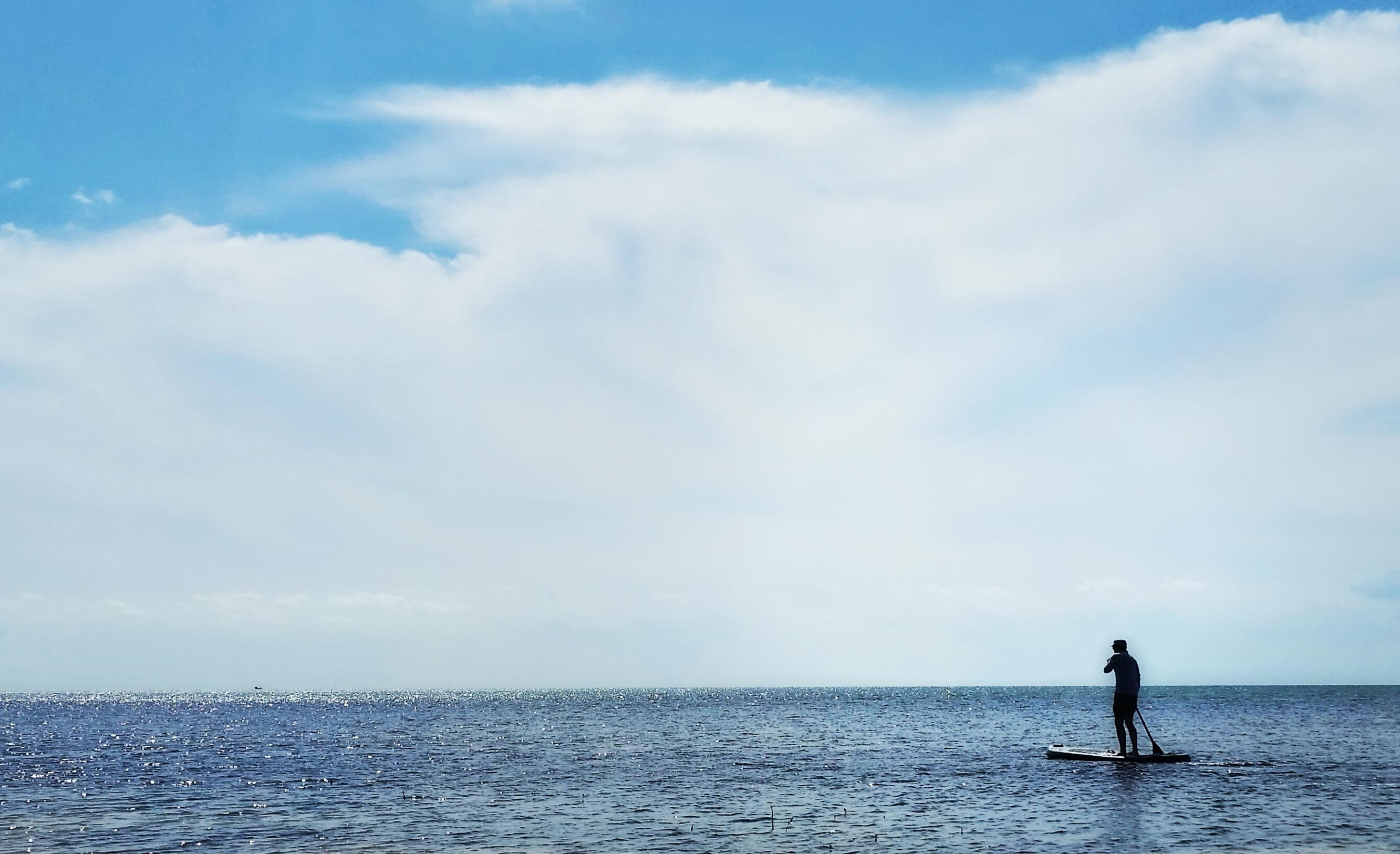
By Ethan Smith
Are you’re tired of pounding the same water as everyone else?
Tired of public wade fishing access points, and want to get to those spots that have a chance of being slightly less pressured but you don’t have a ton of money to drop on a crazy tricked-out top of the line boat?
You are so in luck! There has never been a better time to be in the market for a boat or watercraft that isn’t considered mainstream or typical. There are plenty of incredibly cool vessels out there to suit any angling need and you can, in most cases, hook them up on a shoestring budget when compared to the prices commanded by some of the top manufacturers’ boats in brand new condition.
Don’t get me wrong, I’m not knocking top-dollar boats, they are in fact in many cases superior, and offer some great features. If I could afford a complete stable of specialty boats from the big names I wouldn’t hesitate to find a place in my life for most of them. Boats are sexy and I haven’t met many that I don’t like. There’s a reason that historically boats are referred to in the feminine. They have curves, they can be fussy, high maintenance, and require care and love to maintain a solid relationship. But there isn’t anything more wonderful than taking one out for a little while, and generally just being around them makes me happy.
Over the years I’ve studied hull designs and boat building extensively and even restored boats or various types. I’ve lofted my own plans from scale drawings, then built a wooden strip canoe from those plans. I’ve restored a small Lyman skiff from the mid-1950s, helped my dad restore a ’63 Chris Craft Sea Skiff and am currently helping him restore a Chris Craft Cabin Cruiser.
I have BAS — Boat Acquisition Syndrome — probably more than most, the advent of Craigslist hasn’t helped the situation at all. It’s arguable that the time I’ve spent restoring and working on these boats is more valuable than the money I would have spent if I just bought them in good condition. I have some time to give, but I don’t have much money.
MY MAIN RIDE NOW IS A TOWEE RIVERMASTER CALUSA.
Read More »